Space Triumph Headphones: Plantronics and Others
The idea of this publication appeared during the preparation of the previous post about Fritz Zenheiser. It was a surprise for me to find out that the consumer product, the HD 414, was used as standard equipment on a NASA station. I wanted to find out how space headphones and headsets appeared, how they were used during space flights, which companies produced them and what they produce today.
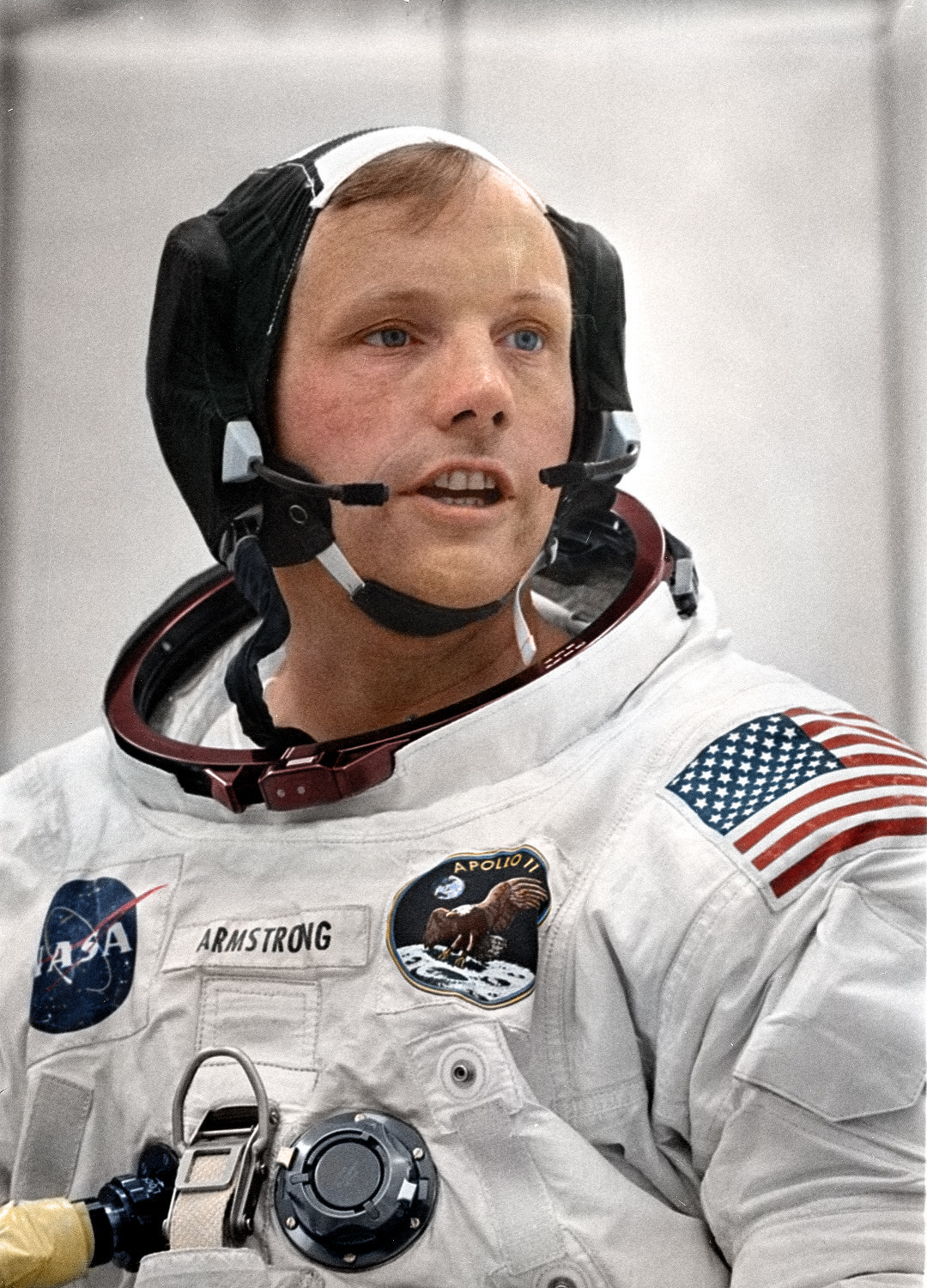
I will not hide the fact that during the preparation of the material I ran into the problem of an acute shortage of information on the topic. This is especially true of domestic developments, about which nothing was found. Probably, the corresponding bar has not been removed from Gagarin and Leonov headsets to this day, and information about them is gathering dust in the MCC archives. With the American space "ears" it turned out to be a little easier, at least with the history of creation and operation, although there is practically no impressive technical information on the network.
We can say that the modern concept of headsets is largely formed by this company. It was Plantronics that was one of the pioneers of headset manufacturing; it was they who developed the first serial headset that flew into space. As often happens in the space industry, the first serial headphones for NASA astronauts were created for aviation.
')
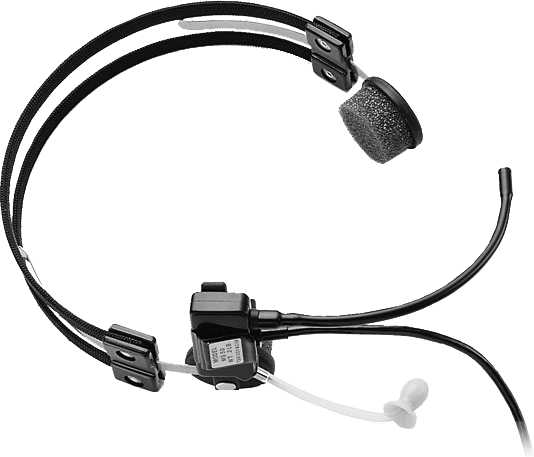
Pacific Plantronics was officially incorporated on May 18, 1961. It all started with the competition of the airline United Airlines, which was not satisfied with the gigantic heavy and uncomfortable headsets for pilots that existed at that moment. One of the pilots of the company Courtney Graham was firmly convinced that he knew what should be the aviation headphones. Graham cooperates with his friend Keith Larkin from Plane-Aids, to create a competitive aviation headset. It is from this tandem that Plantronics has been reading. In record time, in just a few months, the pilot and engineer create the MS-50, a headset that not only wins the competition, but also largely determines the development of devices of this type.
The principle of effective operation of the headset was partially borrowed from hearing aids. As components of the headband were used flexible acoustic tubes (which were previously used in devices for the hearing impaired), connected to a microphone and a speaker. This approach made it possible to significantly increase the sensitivity of the microphone and speakers, while maintaining the small dimensions of the device and ergonomics. In 1962, after approval by the Federal Aviation Administration, the MS-50 was equipped with ground controllers.
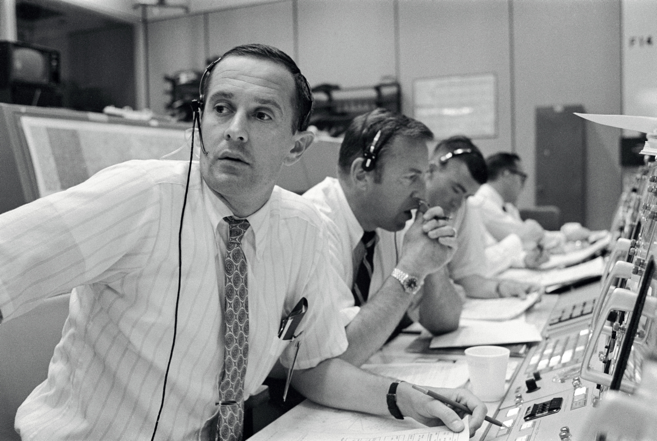
In the meantime, NASA uses various types of military aviation headsets, which are permanently mounted in an astronaut's helmet. The need for an alternative demonstrates the completion of the second manned suborbital flight on the ship Liberty Bell 7. July 21, 1961, after splitting the capsule with the astronaut Virgill Grissom, an emergency situation arises with a threat to life.

In order to quickly leave the cabin Griss disconnects with a pressure helmet. Some time after the splashdown, the hatch of the capsule suddenly opens, and water begins to flow into the cabin. In connection with the flooding of the helmet and stationary radio equipment, the astronaut loses the ability to communicate with ground search services. Using the same mobile headset and mobile transmitter, according to NASA experts, would allow to keep the connection.
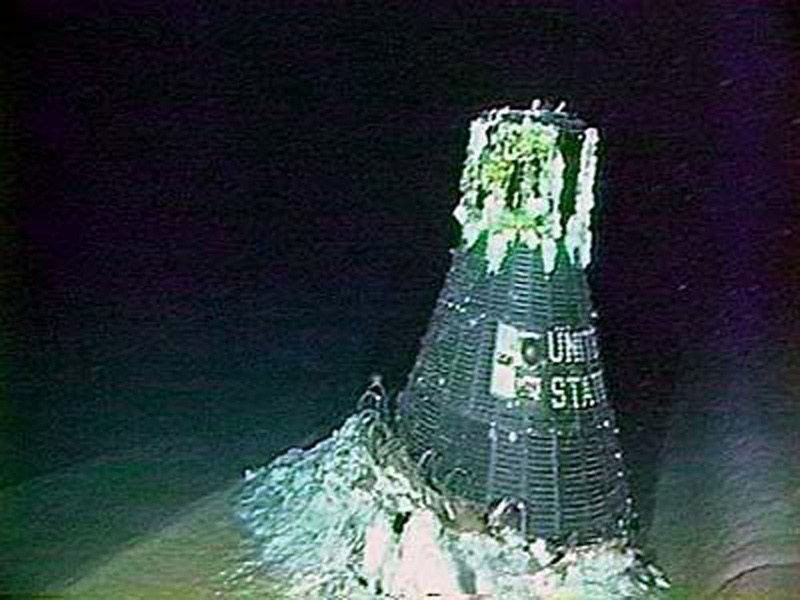
The incident provokes NASA to change the approach to communication systems for astronauts. In 1961, NASA contacted ITT Labs in Fort Wayne, Indiana, which receives an order to develop an autonomous radio station, later called Kellorad. After a long selection of different options, an improved version of the MS-50 headset (headset AS 0500) is included in the device kit.

The space headset had a number of differences from the aviation one, so the microphone circuits were duplicated, and the signal reception circuits were duplicated 5 times. Another innovation has become a relatively effective noise reduction system. Despite these changes, the basic details of the design and ergonomic features remained virtually unchanged, which made it possible to upgrade the model in just 11 days.

NASA astronauts Wally Shirra and Gordon Cooper took part in the adaptation of the headset for space. Interestingly, Shirra had the opportunity to be the first to experience a new device during an orbital flight on October 3, 1962. The MS-50 headset is also equipped with NASA ground control services.
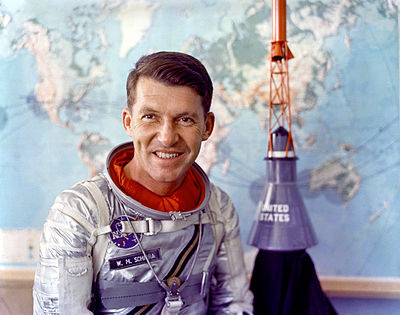
In 1969, through this headset, the earth will receive Neil Armstrong's first message from the moon, during the Apollo-11 expedition. In the future, the device (without significant changes) continues to be used throughout virtually all space missions of US astronauts (All lunar expeditions, Sky Lab, Soyuz-Apollo, Space Shuttle, expeditions to MIR and ISS).
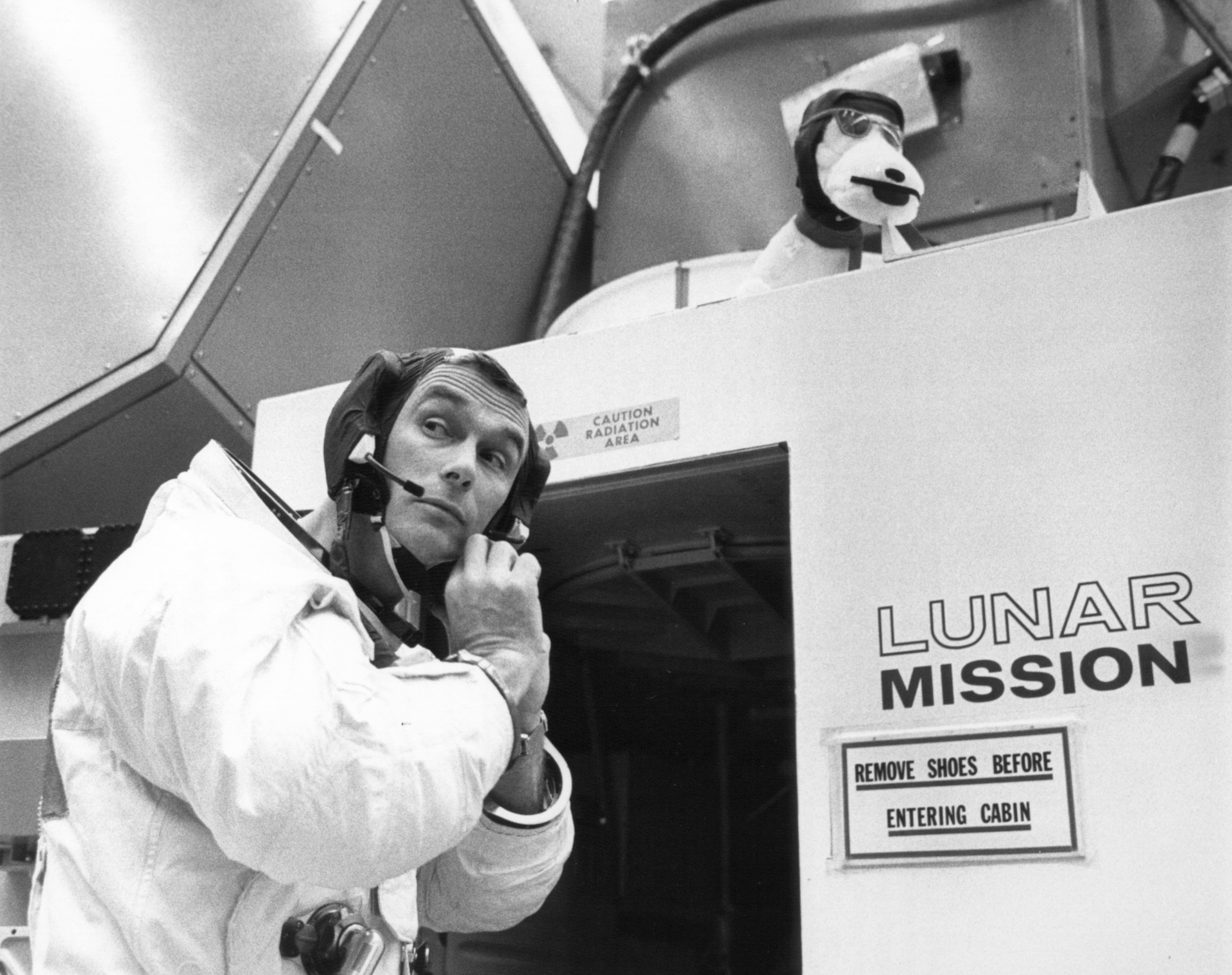

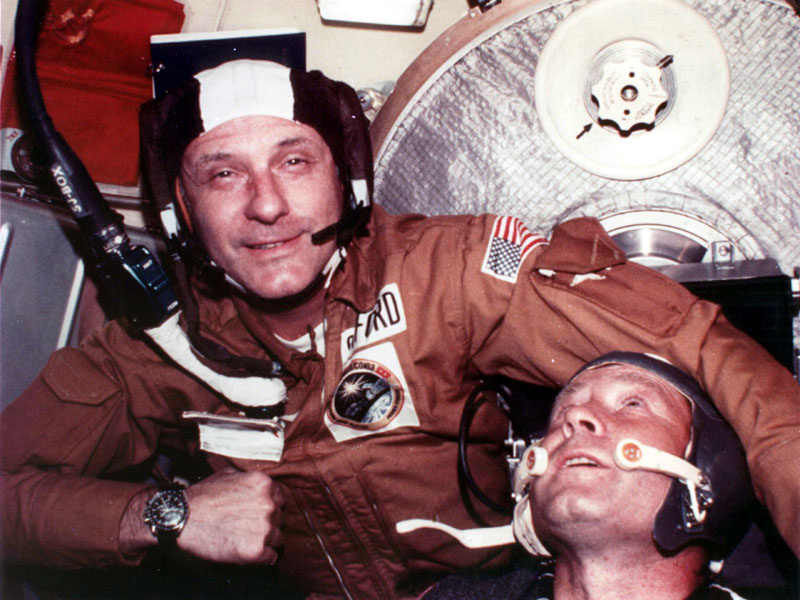
As we wrote in the previous article, in 1973, the German Seinnhiser HD 414, which was rightly considered the best headphones of the late 60s and early 70s, was chosen as the onboard “ears” for the Sky Lab space station.
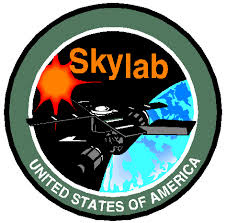
NASA does not disclose the reasons why high-quality stereo sound has become necessary in space. It can be assumed that with a long stay of an astronaut at the orbital station, music for rest will not be superfluous, or studies suggest the need for surround sound. It is also possible that the space agency bribed an open type, revolutionary for that time, which did not completely isolate the listener from what was happening around.

Anyway, the fact remains that the HD 414 was the first household headphone in space, having been in service with NASA for a long time.
On the above photo HD 414 with blue ear cushions around the neck of Sally Christine Ryde in 1983 (Space Shuttle program).
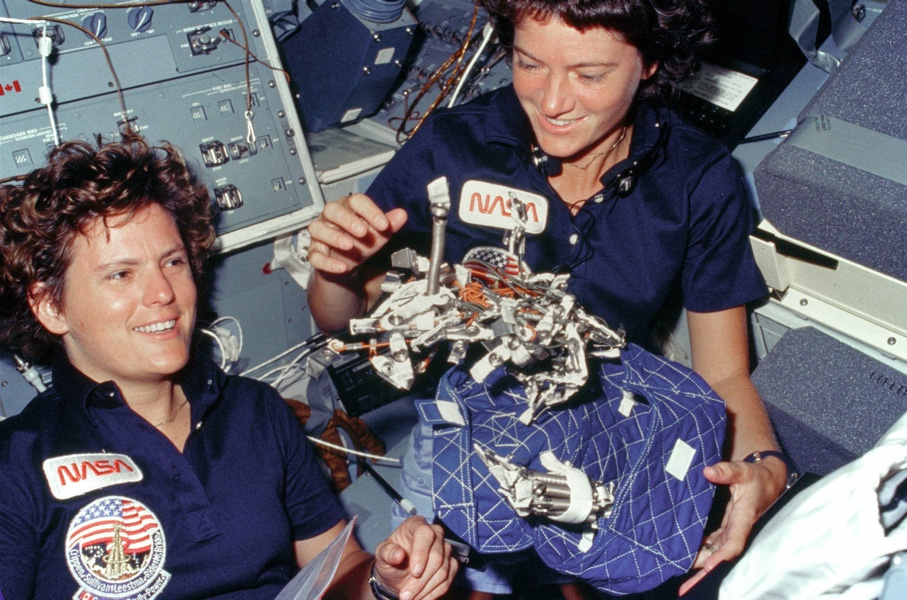
In addition to those already described, the BOSE aviation development projects appeared in the US space programs. Manned space flight and the conditions of a long stay at the orbital stations required more headphones. By the mid-80s, BOSE was the leader in the creation of active noise cancellation systems, working in the market of aviation headsets, headsets and hi-fi equipment.

To prevent astronaut hearing damage, NASA orders headset with active noise cancellation from BOSE. The basis for one of the developments commissioned by the agency becomes the aviation headset A20. Space BOSE headsets were repeatedly used during the flights of the Space Shuttle (the supposed model name is similar to the name of the Space Shuttle shuttle). In addition, they are used at orbital stations for sleeping, since without active noise cancellation it is hard enough to fall asleep at the station.
Companies that carried out orders for the US space industry produce both household products and business gadgets. Features, beloved by astronauts and pilots, quickly migrated into the equipment segment for quite terrestrial needs. It's no secret that Plantronics headsets have unique ergonomic and functional solutions, BOSE headphones are noise-canceling champions, and Seinnhiser supplies headphones with consistently high fidelity sound reproduction to the market.
Headphones and headsets of some of the manufacturers described are easy to find in our catalog using the links below:
Plantronics
Seinnhiser
To create a post, materials were used: www.nasa.gov , www.bose.com , www.quora.com , acquris.se, media.liveauctiongroup.net, irvispress.ru, opentechschool.imtqy.com, wikipedia.org, blogs. plantronics.com

I will not hide the fact that during the preparation of the material I ran into the problem of an acute shortage of information on the topic. This is especially true of domestic developments, about which nothing was found. Probably, the corresponding bar has not been removed from Gagarin and Leonov headsets to this day, and information about them is gathering dust in the MCC archives. With the American space "ears" it turned out to be a little easier, at least with the history of creation and operation, although there is practically no impressive technical information on the network.
Long-Liver in NASA - Plantronics
We can say that the modern concept of headsets is largely formed by this company. It was Plantronics that was one of the pioneers of headset manufacturing; it was they who developed the first serial headset that flew into space. As often happens in the space industry, the first serial headphones for NASA astronauts were created for aviation.
')

Pacific Plantronics was officially incorporated on May 18, 1961. It all started with the competition of the airline United Airlines, which was not satisfied with the gigantic heavy and uncomfortable headsets for pilots that existed at that moment. One of the pilots of the company Courtney Graham was firmly convinced that he knew what should be the aviation headphones. Graham cooperates with his friend Keith Larkin from Plane-Aids, to create a competitive aviation headset. It is from this tandem that Plantronics has been reading. In record time, in just a few months, the pilot and engineer create the MS-50, a headset that not only wins the competition, but also largely determines the development of devices of this type.
The principle of effective operation of the headset was partially borrowed from hearing aids. As components of the headband were used flexible acoustic tubes (which were previously used in devices for the hearing impaired), connected to a microphone and a speaker. This approach made it possible to significantly increase the sensitivity of the microphone and speakers, while maintaining the small dimensions of the device and ergonomics. In 1962, after approval by the Federal Aviation Administration, the MS-50 was equipped with ground controllers.

In the meantime, NASA uses various types of military aviation headsets, which are permanently mounted in an astronaut's helmet. The need for an alternative demonstrates the completion of the second manned suborbital flight on the ship Liberty Bell 7. July 21, 1961, after splitting the capsule with the astronaut Virgill Grissom, an emergency situation arises with a threat to life.

In order to quickly leave the cabin Griss disconnects with a pressure helmet. Some time after the splashdown, the hatch of the capsule suddenly opens, and water begins to flow into the cabin. In connection with the flooding of the helmet and stationary radio equipment, the astronaut loses the ability to communicate with ground search services. Using the same mobile headset and mobile transmitter, according to NASA experts, would allow to keep the connection.

The incident provokes NASA to change the approach to communication systems for astronauts. In 1961, NASA contacted ITT Labs in Fort Wayne, Indiana, which receives an order to develop an autonomous radio station, later called Kellorad. After a long selection of different options, an improved version of the MS-50 headset (headset AS 0500) is included in the device kit.

The space headset had a number of differences from the aviation one, so the microphone circuits were duplicated, and the signal reception circuits were duplicated 5 times. Another innovation has become a relatively effective noise reduction system. Despite these changes, the basic details of the design and ergonomic features remained virtually unchanged, which made it possible to upgrade the model in just 11 days.

NASA astronauts Wally Shirra and Gordon Cooper took part in the adaptation of the headset for space. Interestingly, Shirra had the opportunity to be the first to experience a new device during an orbital flight on October 3, 1962. The MS-50 headset is also equipped with NASA ground control services.

In 1969, through this headset, the earth will receive Neil Armstrong's first message from the moon, during the Apollo-11 expedition. In the future, the device (without significant changes) continues to be used throughout virtually all space missions of US astronauts (All lunar expeditions, Sky Lab, Soyuz-Apollo, Space Shuttle, expeditions to MIR and ISS).



Seinnhiser HD 414 - Earth-to-Space headphones
As we wrote in the previous article, in 1973, the German Seinnhiser HD 414, which was rightly considered the best headphones of the late 60s and early 70s, was chosen as the onboard “ears” for the Sky Lab space station.

NASA does not disclose the reasons why high-quality stereo sound has become necessary in space. It can be assumed that with a long stay of an astronaut at the orbital station, music for rest will not be superfluous, or studies suggest the need for surround sound. It is also possible that the space agency bribed an open type, revolutionary for that time, which did not completely isolate the listener from what was happening around.

Anyway, the fact remains that the HD 414 was the first household headphone in space, having been in service with NASA for a long time.
On the above photo HD 414 with blue ear cushions around the neck of Sally Christine Ryde in 1983 (Space Shuttle program).

Bose - “we can’t hear the roar of the cosmodrome”
In addition to those already described, the BOSE aviation development projects appeared in the US space programs. Manned space flight and the conditions of a long stay at the orbital stations required more headphones. By the mid-80s, BOSE was the leader in the creation of active noise cancellation systems, working in the market of aviation headsets, headsets and hi-fi equipment.

To prevent astronaut hearing damage, NASA orders headset with active noise cancellation from BOSE. The basis for one of the developments commissioned by the agency becomes the aviation headset A20. Space BOSE headsets were repeatedly used during the flights of the Space Shuttle (the supposed model name is similar to the name of the Space Shuttle shuttle). In addition, they are used at orbital stations for sleeping, since without active noise cancellation it is hard enough to fall asleep at the station.
A drop of links and jeans
Companies that carried out orders for the US space industry produce both household products and business gadgets. Features, beloved by astronauts and pilots, quickly migrated into the equipment segment for quite terrestrial needs. It's no secret that Plantronics headsets have unique ergonomic and functional solutions, BOSE headphones are noise-canceling champions, and Seinnhiser supplies headphones with consistently high fidelity sound reproduction to the market.
Headphones and headsets of some of the manufacturers described are easy to find in our catalog using the links below:
Plantronics
Seinnhiser
To create a post, materials were used: www.nasa.gov , www.bose.com , www.quora.com , acquris.se, media.liveauctiongroup.net, irvispress.ru, opentechschool.imtqy.com, wikipedia.org, blogs. plantronics.com
Source: https://habr.com/ru/post/403943/
All Articles